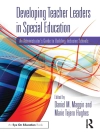Scripts of Blackness shows how the early modern mass media of theatre and performance culture at-large helped turn blackness into a racial category, that is, into a type of difference justifying emerging social hierarchies and power relations in a new world order driven by colonialism and capitalism.
In this book, Noémie Ndiaye explores the techniques of impersonation used by white performers to represent Afro-diasporic people in England, France, and Spain in the sixteenth and seventeenth centuries, using a comparative and transnational framework. She reconstructs three specific performance techniques—black-up (cosmetic blackness), blackspeak (acoustic blackness), and black dances (kinetic blackness)—in order to map out the poetics of those techniques, and track a number of metaphorical strains that early modern playtexts regularly associated with them. Those metaphorical strains, the titular scripts of blackness of this book, operated across national borders and constituted resources, as they provided spectators and participants with new ways of thinking about the Afro-diasporic people who lived or could/would ultimately live in their midst.
Those scripts were often gendered and hinged on notions of demonization, exclusion, exploitation, animalization, commodification, sexualization, consensual enslavement, misogynoir, infantilization, and evocative association with other racialized minorities. Scripts of Blackness attempts to grasp the stories that Western Europeans told themselves through performative blackness, and the effects of those fictions on early modern Afro-diasporic subjects.
Spis treści
Contents
Introduction. Performative Blackness in Early Modern Europe
Chapter 1. A Brief History of Baroque Black-Up: Cosmetic Blackness and Religion
Chapter 2. A Brief Herstory of Baroque Black-Up: Cosmetic Blackness, Gender, and Sexuality
Chapter 3. Blackspeak: Acoustic Blackness and the Accents of Race
Chapter 4. Black Moves: Race, Dance, and Power
Post/Script. Ecologies of Racial Performance
Appendix. Selection of Early Modern Plays Featuring Black Characters
Notes
Bibliography
Index
Acknowledgments
O autorze
Noémie Ndiaye is Associate Professor of English at the University of Chicago.












